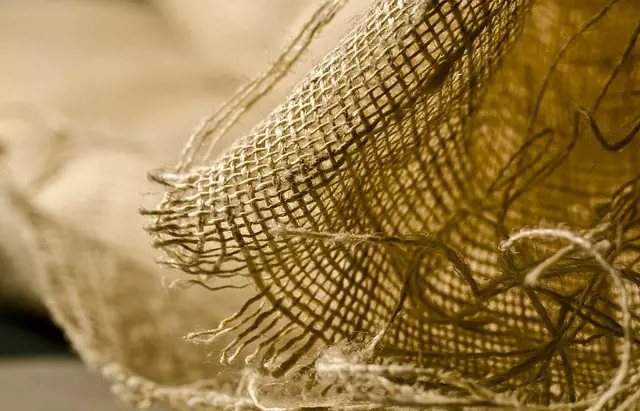Kratom tea, made from the Mitragyna speciosa tree's leaves, has gained attention as a natural remedy for muscle soreness due to its alkaloids mitragynine and 7-hydroxymitragynine, which may offer analgesic effects. To prepare kratom tea effectively, start by heating water and adding an appropriate amount of kratom powder—typically one teaspoon per cup of water—and simmer for 10-20 minutes to maximize active compound absorption. Strain the mixture to remove sediment, and adjust taste with natural sweeteners or citrus juice if desired. For those seeking a gentle yet enduring approach to pain relief from muscle soreness linked to intense physical activity, this method is recommended. It's essential to use high-quality kratom and begin with a modest dosage to gauge personal sensitivity and adhere to local laws regarding its consumption. While kratom tea shows promise in managing chronic pain and enhancing recovery, it should be used with caution due to potential side effects and interactions with other medications. Always consult healthcare professionals before incorporating kratom into your wellness routine to ensure safe use aligned with your health goals. A holistic approach to muscle soreness includes integrating kratom tea preparation with additional practices like stretching, hydration, adequate rest, and gentle exercises for comprehensive recovery and injury prevention.
Muscle soreness, a common affliction for athletes and active individuals, can hinder recovery and diminish performance. Exploring natural remedies, Kratom supplements have emerged as a potential aid in alleviating muscle pain. This article delves into the mechanisms behind muscle soreness and how Kratom’s unique properties may offer relief. We guide you through the art of crafting kratom tea, known as “kratom tea how to make,” which is a popular method for consuming this supplement. Furthermore, we assess its efficacy in muscle recovery and pain management, and provide insights on incorporating Kratom into a holistic approach for muscle soreness relief.
- Understanding Muscle Soreness and Kratom's Role in Relief
- Crafting Kratom Tea for Muscle Soreness: A Step-by-Step Guide
- Assessing the Effectiveness of Kratom for Muscle Recovery and Pain Management
- Integrating Kratom into a Holistic Muscle Soreness Relief Routine
Understanding Muscle Soreness and Kratom's Role in Relief

Muscle soreness, often experienced after intense physical activity or as a result of overuse injuries, can significantly impede recovery and performance. It arises when muscles are subjected to stress beyond their usual capacity, leading to micro-tears and inflammation. Understanding the origin and nature of muscle soreness is crucial for developing effective relief strategies. This is where kratom, a natural supplement derived from the leaves of the Mitragyna speciosa tree, may offer benefits. Kratom contains various alkaloids, such as mitragynine and 7-hydroxymitragynine, which have been studied for their potential analgesic properties. These compounds interact with the body’s opioid receptors, providing pain relief that can help alleviate muscle soreness.
For those seeking to incorporate kratom into their recovery regimen, kratom tea how to make is a common preparation method. To prepare kratom tea, one must accurately measure the desired amount of kratom powder and place it in a pot of hot water. The mixture should then be simmered for about 20 minutes to allow the alkaloids to infuse into the water fully. Straining the tea into a cup ensures a more refined and palatable beverage. It’s important to adhere to recommended dosages to avoid adverse effects, as the potency of kratom can vary depending on the strain and individual sensitivity. Consuming kratom tea how to make can provide a gentle and lasting relief from muscle soreness, making it a popular choice among individuals looking for natural alternatives to manage post-exercise discomfort.
Crafting Kratom Tea for Muscle Soreness: A Step-by-Step Guide

When exploring natural remedies for muscle soreness, kratom tea has emerged as a popular alternative. Kratom, derived from the leaves of Mitragyna speciosa, is known for its potential soothing properties. To harness these benefits in a tea form, careful preparation is key. Begin by selecting high-quality, dried kratom leaves or powder, which can be sourced from reputable vendors. The powder form simplifies the process of making kratom tea for muscle soreness.
To craft your kratom tea, start by boiling about 2 cups of water. Once the water reaches a rolling boil, reduce the heat and add approximately one teaspoon of kratom powder per cup of water you wish to prepare. Stir gently to ensure the kratom is evenly distributed. Allow the mixture to simmer for 10-15 minutes, as this helps to extract the active alkaloids from the kratom. For a more potent brew, you can let it steep for up to 20 minutes, depending on your tolerance and desired effects. After steeping, strain the tea through a fine sieve or muslin cloth to remove any sediment and ensure a smooth consistency. It’s important to note that the taste of kratom tea can be an acquired one; however, you can enhance its palatability by adding natural sweeteners like honey or stevia, or a splash of your preferred citrus juice. Always allow the tea to cool slightly before consuming, and remember to start with a lower dosage to gauge how your body reacts, as individual sensitivities vary. Enjoying kratom tea for muscle soreness can be a part of your daily routine, but it’s crucial to use it responsibly and in moderation, adhering to local laws and regulations regarding its consumption.
Assessing the Effectiveness of Kratom for Muscle Recovery and Pain Management

When exploring the effectiveness of kratom for muscle recovery and pain management, it’s crucial to consider the various forms in which this supplement can be consumed. Among these, kratom tea stands out as a popular choice due to its comforting nature and the ease with which one can control dosage. The alkaloids present in kratom leaves, such as mitragynine and 7-hydroxymitragynine, are believed to interact with the opioid receptors in the brain, providing pain relief that can be beneficial for muscle soreness. Research suggests that regular intake of kratom tea may alleviate chronic pain and aid in recovery by reducing inflammation and promoting a relaxing effect on the muscles.
However, the efficacy of kratom for muscle recovery and pain management can vary among individuals due to factors like metabolism, tolerance, and the specific strain of kratom used. Additionally, while anecdotal evidence abounds regarding its benefits, scientific research is still emerging. It’s important to approach the use of kratom with caution, as it may have side effects and can interact with other medications. Prospective users should consult with a healthcare provider before integrating kratom tea into their muscle recovery or pain management regimen, ensuring they do so in a safe and informed manner. This step is essential for assessing personal responses to kratom and determining its suitability for individual needs within the context of a comprehensive approach to wellness.
Integrating Kratom into a Holistic Muscle Soreness Relief Routine

When incorporating kratom into a holistic routine for muscle soreness relief, it’s beneficial to consider kratom tea as a delivery method due to its bioavailability and gentle effects. To prepare kratom tea, one must first select high-quality, organic kratom leaves or powder from a reputable supplier. Begin by boiling two cups of water and then adding one to two teaspoons of kratom powder, depending on your desired strength. Allow the mixture to simmer for approximately 20 minutes to extract the active alkaloids. Strain the tea into a cup and drink it while it’s warm. This beverage can help alleviate muscle pain by interacting with the opioid receptors in the brain, providing analgesic effects that are both natural and potent.
A holistic approach to muscle soreness relief should also include other complementary practices such as stretching, proper hydration, and adequate rest. Additionally, engaging in gentle exercises like yoga or Tai Chi can enhance blood flow, promoting faster recovery and reducing the likelihood of future muscle strain. When integrating kratom tea into your routine, it’s crucial to monitor your body’s response and maintain awareness of the recommended dosage to avoid overconsumption. Combining kratom with these holistic practices not only targets the physical aspect of soreness but also supports overall well-being, contributing to a more comprehensive approach to muscle care.
Muscle soreness can be a significant hindrance to both physical performance and daily comfort. The exploration of kratom supplements as a potential aid in muscle recovery and pain management has yielded promising insights, particularly when applied in the context of kratom tea preparation. By following the detailed steps provided in “Crafting Kratom Tea for Muscle Soreness: A Step-by-Step Guide,” individuals can effectively harness the natural properties of kratom to alleviate discomfort. The article has assessed the effectiveness of kratom and found it to be a versatile addition to a holistic relief routine, offering a natural alternative for those seeking respite from muscle soreness. As with any supplement, however, it is crucial to approach its use with informed guidance and an understanding of its potential interactions with other substances. By integrating kratom tea how-to’s into a broader strategy that includes rest, hydration, and proper nutrition, one can potentially enhance their recovery process and maintain muscle health.






